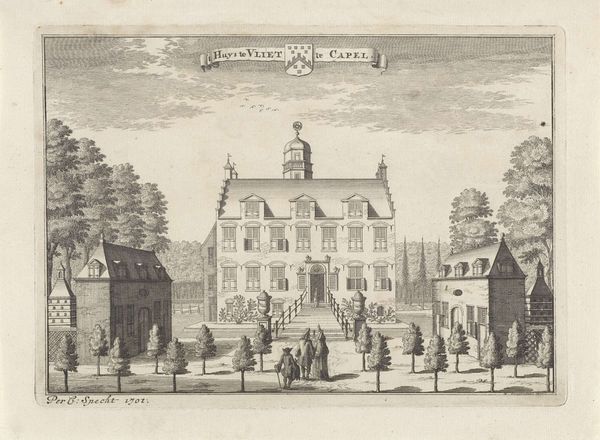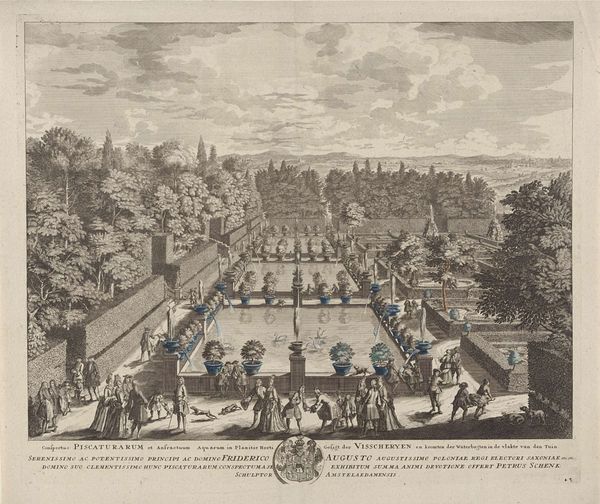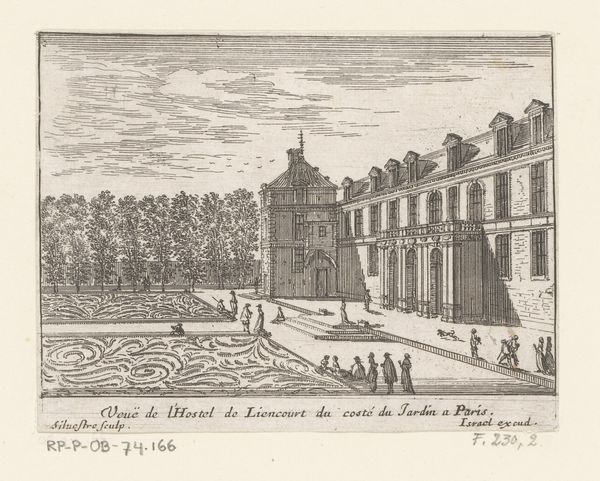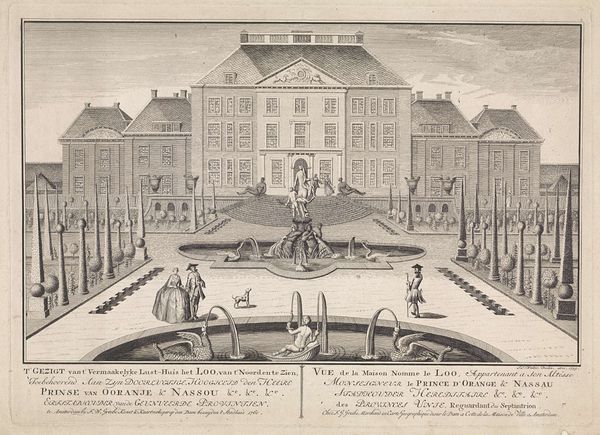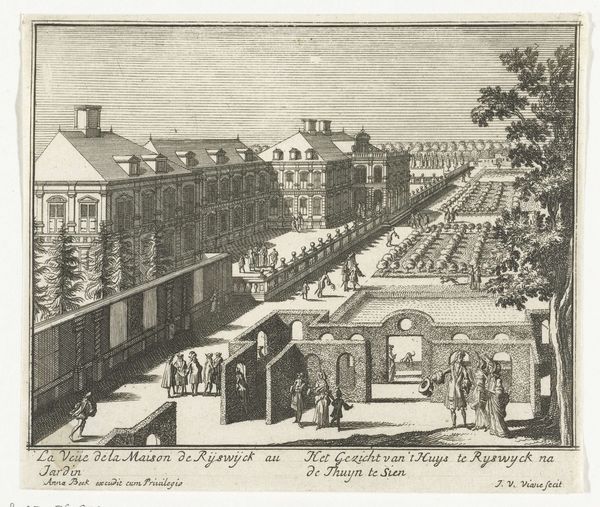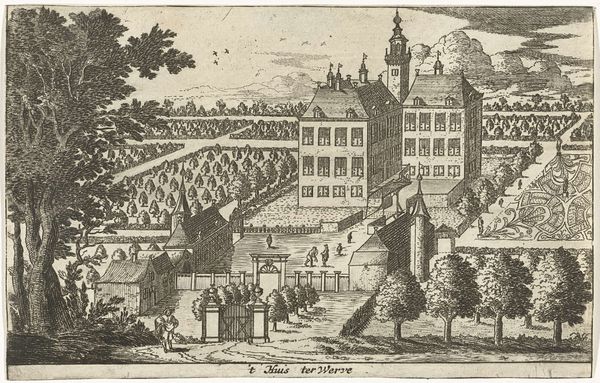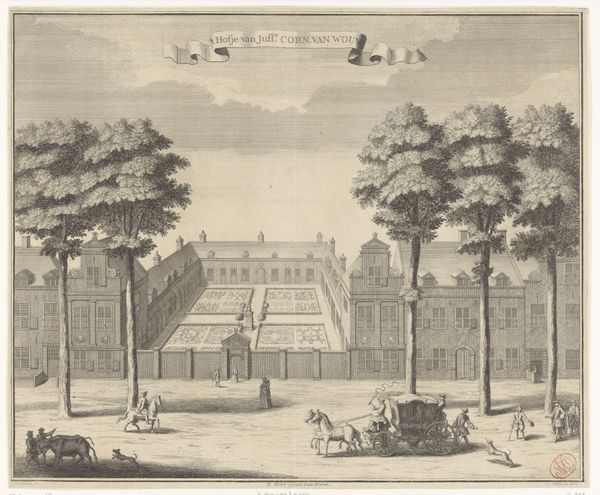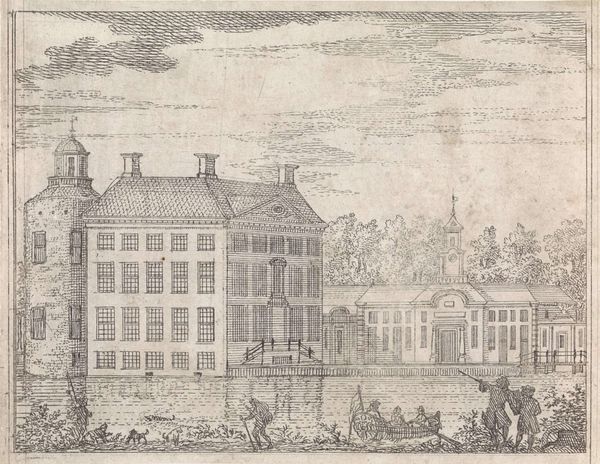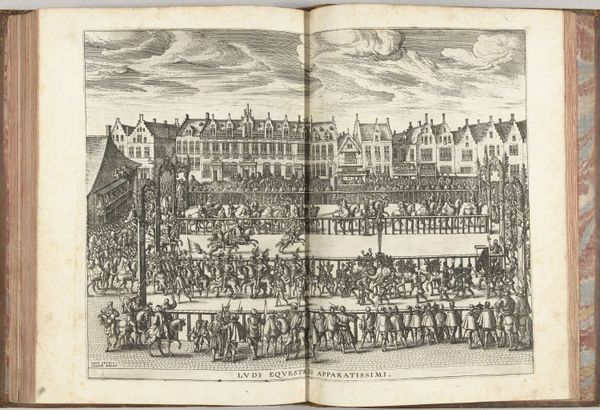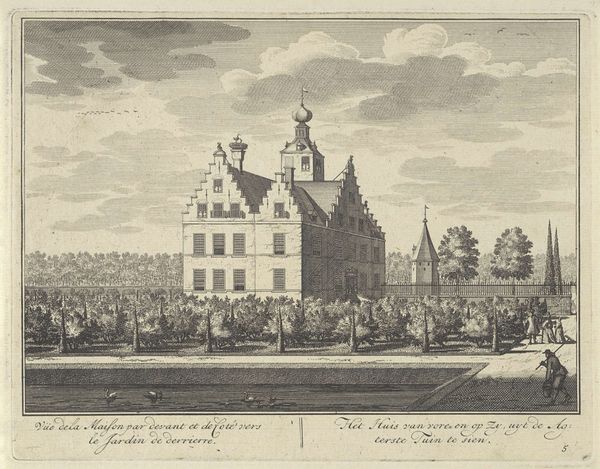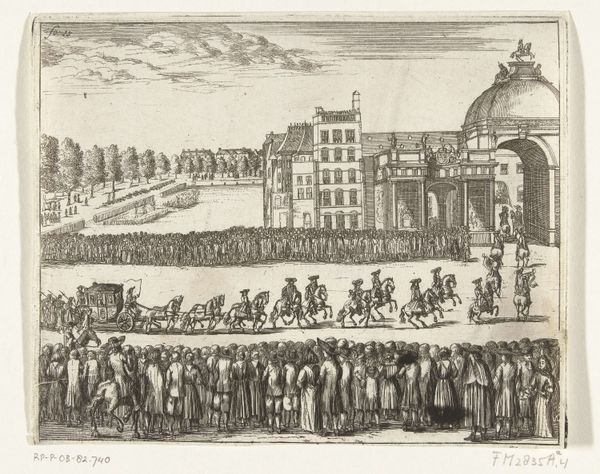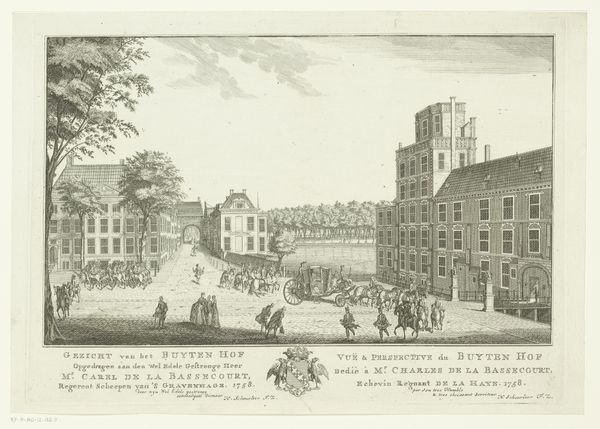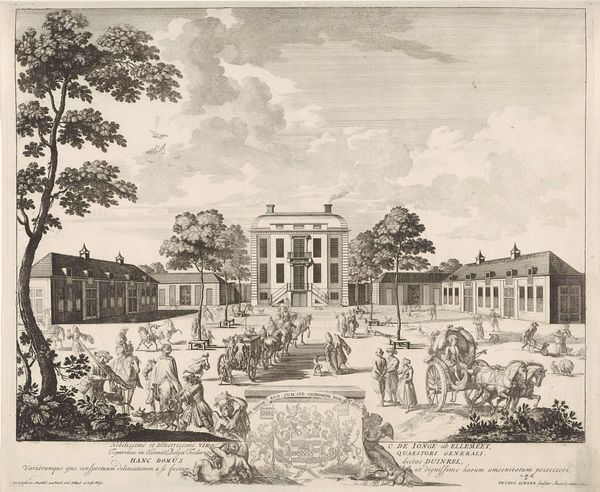
Gezicht op de achterzijde van Huis Clingendael met de tuinen Possibly 1682 - 1746
0:00
0:00
drawing, etching, ink, engraving
#
pen and ink
#
landscape illustration sketch
#
drawing
#
baroque
#
mechanical pen drawing
#
pen illustration
#
pen sketch
#
etching
#
old engraving style
#
landscape
#
perspective
#
personal sketchbook
#
ink
#
geometric
#
pen-ink sketch
#
pen work
#
cityscape
#
storyboard and sketchbook work
#
engraving
Dimensions: height 128 mm, width 164 mm
Copyright: Rijks Museum: Open Domain
Curator: The fineness of line is quite striking! The work before us, residing at the Rijksmuseum, is a drawing, possibly dating from 1682 to 1746. It’s titled "Gezicht op de achterzijde van Huis Clingendael met de tuinen," or "View of the rear of Huis Clingendael with the gardens." Attributed to Daniël Stopendaal, the materials consist of ink and engraving on paper. Editor: The gardens definitely grab my attention. The layout looks so carefully planned, almost mathematically precise in its division of space and how it leads up to the Huis at the center. Curator: Exactly. Consider how ink, often associated with record-keeping, memorializes elite social spaces. Think about the labour required for upkeep, reflecting a society valuing order, control and also, power. Stopendaal isn't just depicting; he's documenting land use and ownership, even conspicuous consumption. Editor: And those garden ornaments and fountains! They scream wealth, prestige, a certain… cultivated identity. They're arranged with a theatrical eye to the viewer’s experience, designed to communicate meaning, influence their feelings. It also makes me consider a sense of what "paradise" means. Curator: Very insightful. We see people within the landscape. Are they working or at leisure? How does class factor into these constructed spaces? The ink work here suggests replication, printing… it becomes about disseminating power beyond the grounds themselves. Editor: The ink gives the work such clarity. The repetition and sharp details speak to a time when these motifs—gardens, geometrically planned spaces—represented status. I imagine this house and its gardens would conjure thoughts of a family legacy. Curator: Right, from initial drawing to print production, the process speaks volumes about social messaging, how images reinforce hierarchy and promote values associated with privilege. Editor: This tour through method and materials has provided an acute perspective to what it depicts; it now suggests a narrative steeped in symbolism and the weight of image-making itself.
Comments
No comments
Be the first to comment and join the conversation on the ultimate creative platform.
